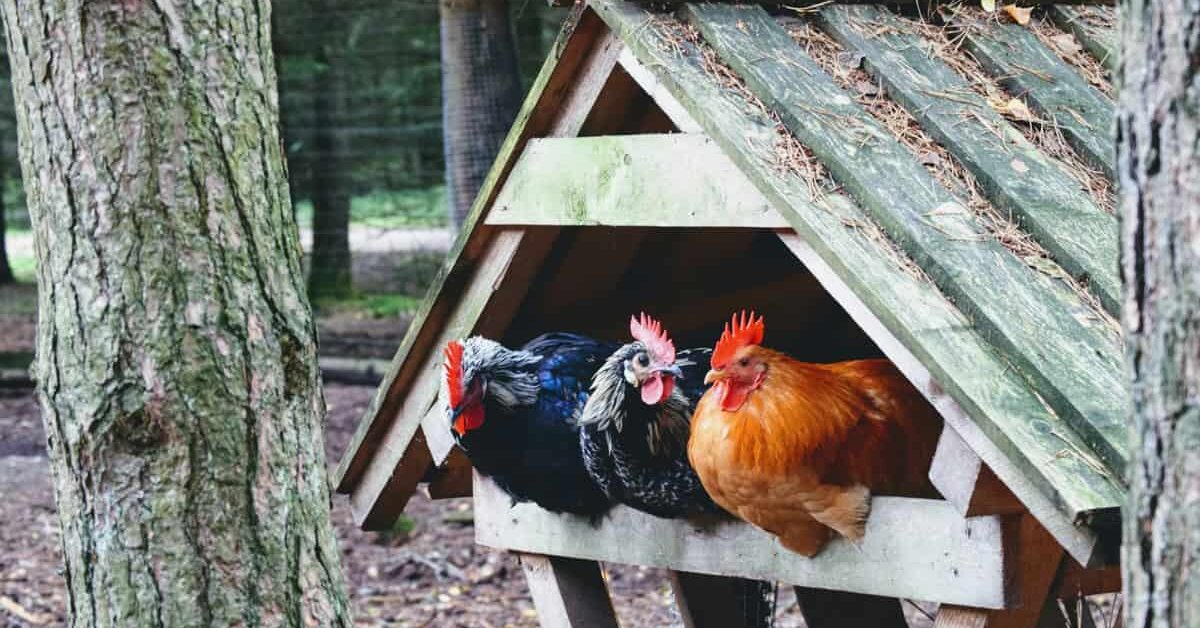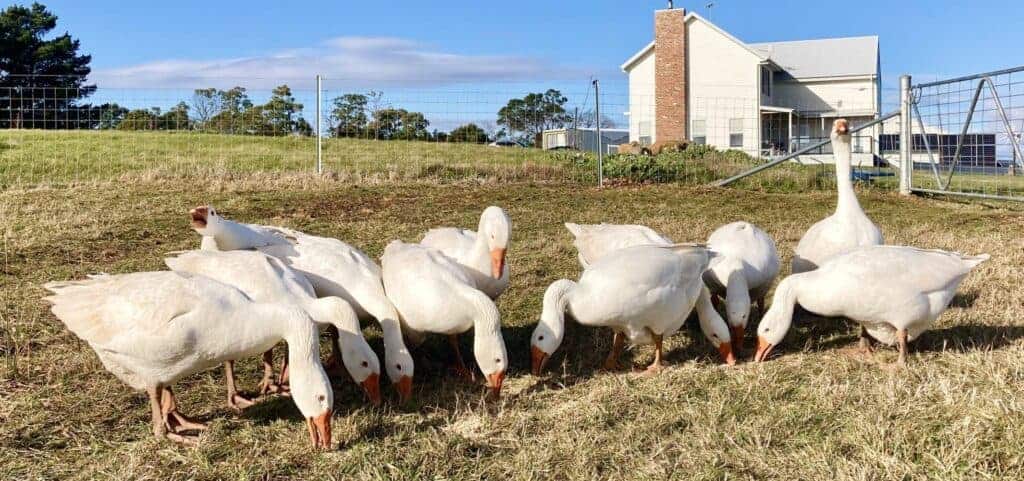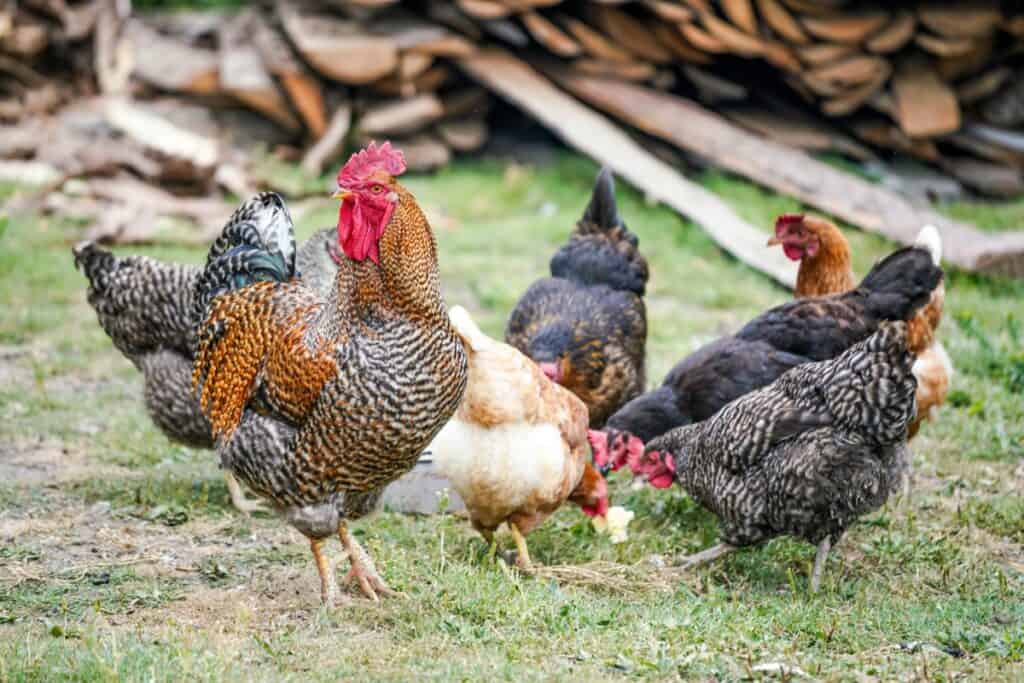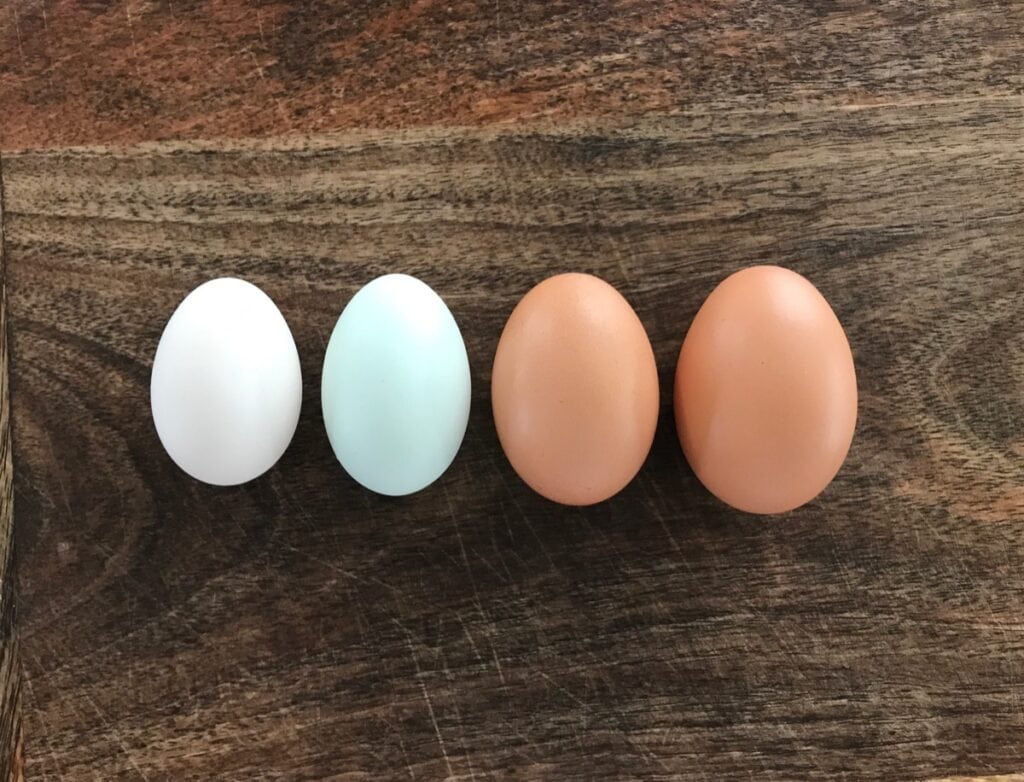Over the last 8,000 or so years of domesticated chickens; businesses, farmers and the chicken obsessed have all worked toward the improvement of chickens as a table bird. But with hundreds of unique breeds worldwide, which is the best heritage chicken breed for meat?
Firstly, What is a Heritage Chicken Breed?
Heritage chicken breeds are the ‘old fashioned’ breeds of chicken. The breeds our ancestors would keep to support their families diet, whether that be in the way of meat or eggs.
You can think of heritage breeds as you do heirloom vegetables. They are what all modern chickens, including commercial breeds, descend from.
For further information and comparisons on heritage and commercial breeds see my Commercial or Heritage Chicken Breeds post.
Secondly, Why Raise Heritage Chicken Breeds for Meat?
They take longer to reach butchering size and they carry less meat, so why would anyone choose a heritage breed over a commercial or hybrid chicken when it comes to meat production?
Here are a few reasons, starting with the most obvious:
Taste
Commercial chickens have been bred to gain muscle and weight as fast as possible with exceptional feed conversation on a single food diet. Theis leads to very white, tasteless meat.
Heritage breed growth rate is much slower than their commercial cousins. But this longer timeframe to maturity leads to a richer flavoured, well-textured meat.
Self Sustainable Flock
One of the common reasons for raising heritage breeds is to have a continuous replenishment of stock year on year. Hen lays eggs, eggs are hatched, chicks are raised, birds are butchered (with the exception of next seasons laying stock). The cycle starts again.
Commercial birds have been bred specifically to grow fast and this is where they direct their energy. Most commercial hens either lay insignificant number of eggs or none at all. They also grow so large so quickly that by the time a hen starts egg production they can no longer mate naturally.
Even if you were to successfully breed commercial chickens, they don’t breed true. Which means that there is no guarantee the offspring will carry the same physical traits as their parentage.
Home Raised and Butchered
Raising meat on your homestead puts the control of your food back in your hands. Being able to control how their animals are raised, sheltered and fed before they head to the table is an important factor in why homesteaders raise their own livestock.
And that brings us to the last point:
Animal Welfare
I understand that there is a place in this world for large scale chicken farming with commercial/hybrid birds. In order to feed the worlds population there really isn’t another choice. Unless we all decide to stop eating chicken…unlikely.
But, that shouldn’t mean we turn a blind eye to the chicken industry and the animal welfare standards they should uphold.
Two factors worth noting on commercial chickens are:
- Commercial birds have very little tolerance for temperature fluctuation, therefore are kept indoors in a temperature control environment for the entirety of their lives.
- Because of the unnatural size we are now growing commercial chickens too, by the time they are 8-10 weeks old (butcher age) they can no longer properly support their own weight. Often suffering terrible joint issues.
Now…My List of the 6 Best Heritage Chicken Breeds for Meat
I have kept this list to six breeds that are relatively widespread and easily procured across the globe. There are obviously many breeds specific to regions that make fine table birds that i haven’t included here because of the lack of accessibility.
Also, when assessing the size of bird you want to raise, keep in mind that females will dress smaller than males. Hence the variation in weights below. The females make up the smaller end of the weight ranges.
Skin colour is mentioned for no other reason than I’m aware that individuals have preferences.
I have listed these breeds in alphabetical order.
Brahma
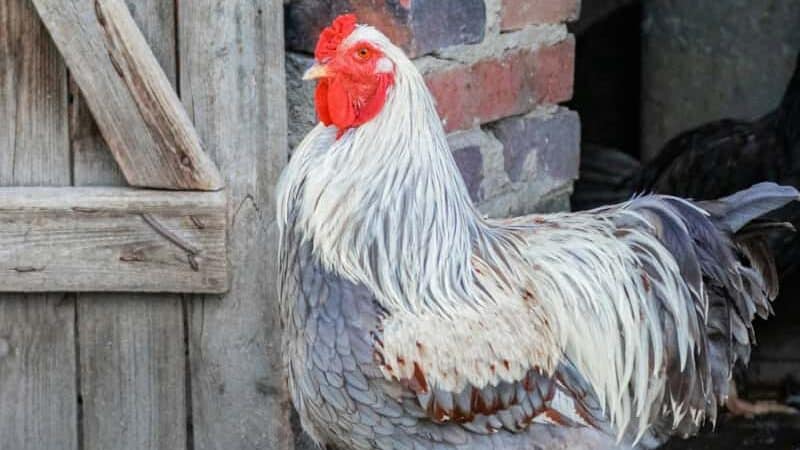
Photo by Jakub Pabis on Unsplash
There is much debate about the origins of the Brahma breed. It is believed to have been developed in either China or India, for where it is named after the Brahmaputra River.
What we do know is that the Brahma is one of the largest chicken breeds. It was this along with its quick growth and maturity that made it one of the most popular meat breeds in the early 1900’s until commercial poultry farming gained momentum.
As well as their size, Brahma’s are known for their calm demeanour, feathered legs and tendency to lay eggs over winter. Although in general they are poor egg layers from an annual output perspective.
Brahma Overview
| Age of Maturity | 16 – 20 weeks |
| Live Weight | 4.0 – 5.5 kg (9.0 – 12.0 pounds) |
| Dressed Weight | 2.8 – 3.8 kg (6.3 – 8.4 pounds) |
| Skin Colour | Yellow |
| Breed Temperament | Calm |
Dorking
Dorkings, an ancient breed developed in Italy and named after the English town, are widely considered to have the best flavour of all the table birds, with fine-textured and very white meat. Although they are on the smaller side for a meat breed.
They have a gentle nature making them easy to handle. They have maintained a strong instinct to forage for food and make excellent mothers.
If keeping Dorkings in cold climates expect to provide shelter from the elements. They aren’t cold hardy and their large combs are susceptible to frost bite.
In many parts of the world the Dorking is considered a threatened breed. The raising and breeding of Dorkings by homesteaders and backyard keepers is a great step in their recovery.
Dorking Overview
| Age of Maturity | 16 – 20 weeks |
| Live Weight | 3.0 – 4.0 kg (7.0 – 9.0 pounds) |
| Dressed Weight | 2.0 – 2.8 kg (5.0 – 6.5 pounds) |
| Skin Colour | White |
| Breed Temperament | Calm |
Indian Game (Cornish)
The Indian Game or Cornish as it is referred to in the United States is the foundation for most of the commercial/hybrid’s used in intensive poultry farming today. Although fast growers, this heritage breed is no match for their commercial cousins.
This English breed from Cornwall was originally intended for cockfighting but had no aptitude for it. Instead it’s unusually broad breast and stocky, muscular body lent itself to becoming a table bird.
Although a great meat breed, their cockfighting history has resulted in an aggressive temperament. They are active birds who resent confinement. They thrive in free-range environments and are excellent forages.
Indian Game (Cornish) Overview
| Age of Maturity | 18 – 22 weeks |
| Live Weight | 3.5 – 4.5 kg (7.7 – 10.0 pounds) |
| Dressed Weight | 2.5 – 3.2 kg (5.5 – 7.0 pounds) |
| Skin Colour | Yellow |
| Breed Temperament | Aggressive |
Plymouth Rock
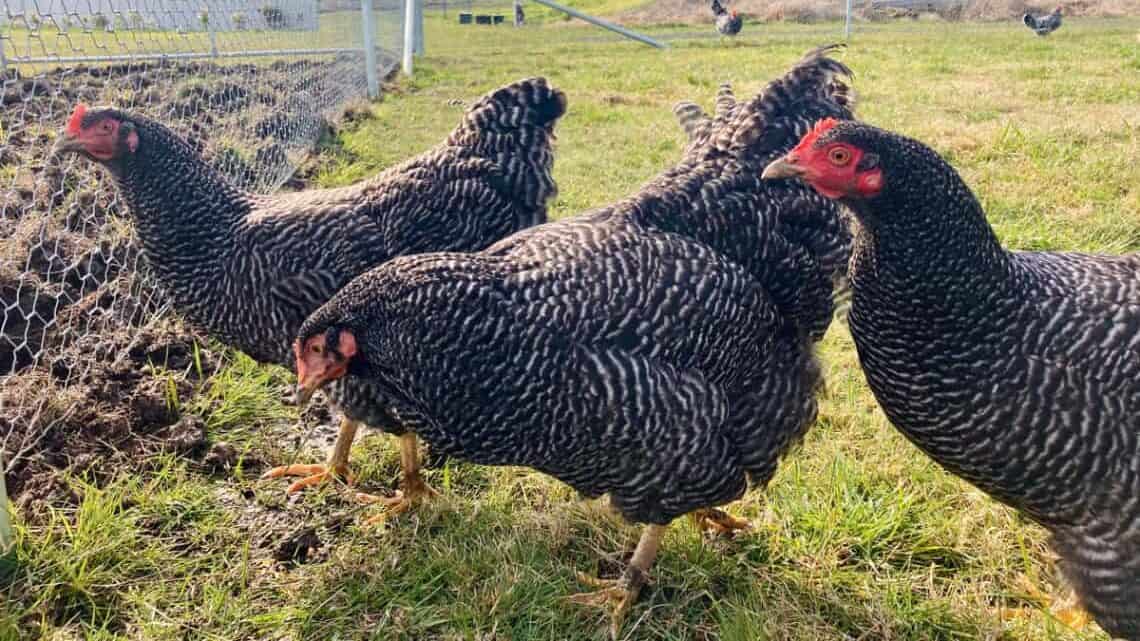
The Plymouth Rock is generally seen as a laying breed, however, they also make a great table bird. A good choice for homesteads looking for a dual purpose breed.
This breed is one of, if not the, most famous of all the American breeds. Developed in Massachusetts in the 1860’s, the Plymouth Rock quickly become the most common chicken in America. Loved for its colour, egg laying, hardiness, meat and exceptional mothering.
Although generally a calm breed, don’t expect to be welcomed into the coop when mother hen has a clutch of chicks.
With the rise of commercial poultry farming in the 1950’s, the Plymouth Rock (initially used in cross-breeding commercial chickens) fell out of favour; almost to the point of extinction. Today this breed is having a renaissance as a staple flock on many homesteads.
Plymouth Rock Overview
| Age of Maturity | 16 – 20 weeks |
| Live Weight | 3.0 – 4.5 kg (7.0 – 10.0 pounds) |
| Dressed Weight | 2.0 – 3.2 kg (5.0 – 7.0 pounds) |
| Skin Colour | Yellow |
| Breed Temperament | Calm |
Orpington
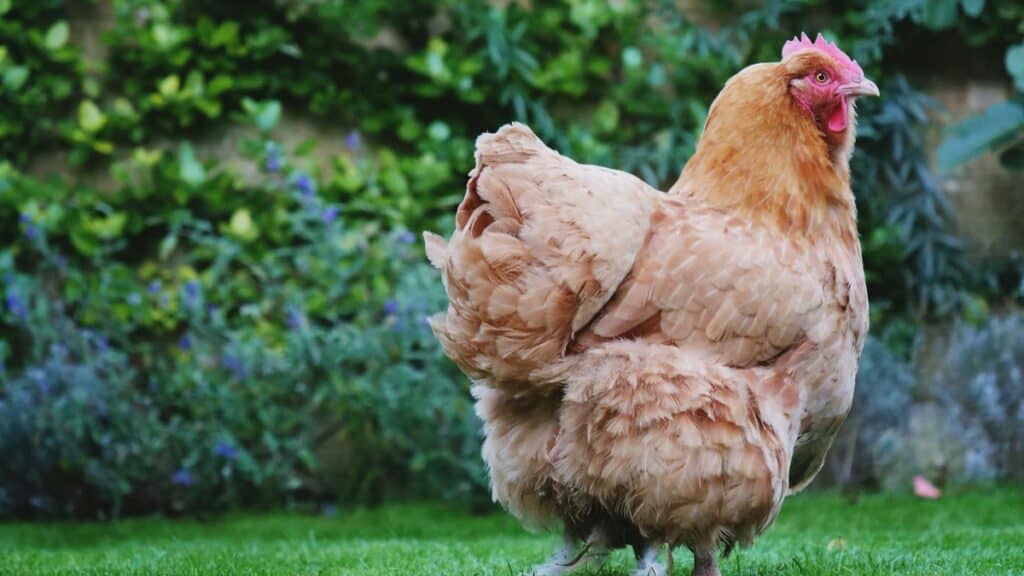
Photo by George Walker on Unsplash
This might be contentious. Not because the Orpington doesn’t make for a superb table bird but because this beautiful English breed has a reputation for being a gentle giant who loves cuddles and makes the ideal backyard pet. Which is all true.
I’ve also fallen for the charms of this delightful breed. I pride myself on living by the rule that everything on the farm has its place and must pull its weight.
But every rule comes with an exception and mine was a black Orpington hen, lovingly named Big Black (our only hen with a name). She was the matriach of our coop with no expectation of productivity. Big Black left us only a short time ago after living out her glorious 13 years with us. She was laying right up until her last summer.
Getting back to the point. The Orpingtons heavy frame is favoured for the table. They are, however, poor forages, needing a higher volume of feed than the other breeds on this list and slower to mature.
Orpington Overview
| Age of Maturity | 18 – 24 weeks |
| Live Weight | 3.5 – 4.5 kg (7.7 – 10.0 pounds) |
| Dressed Weight | 2.5 – 3.2 kg (5.5 – 7.0 pounds) |
| Skin Colour | White |
| Breed Temperament | Docile |
Wyandotte
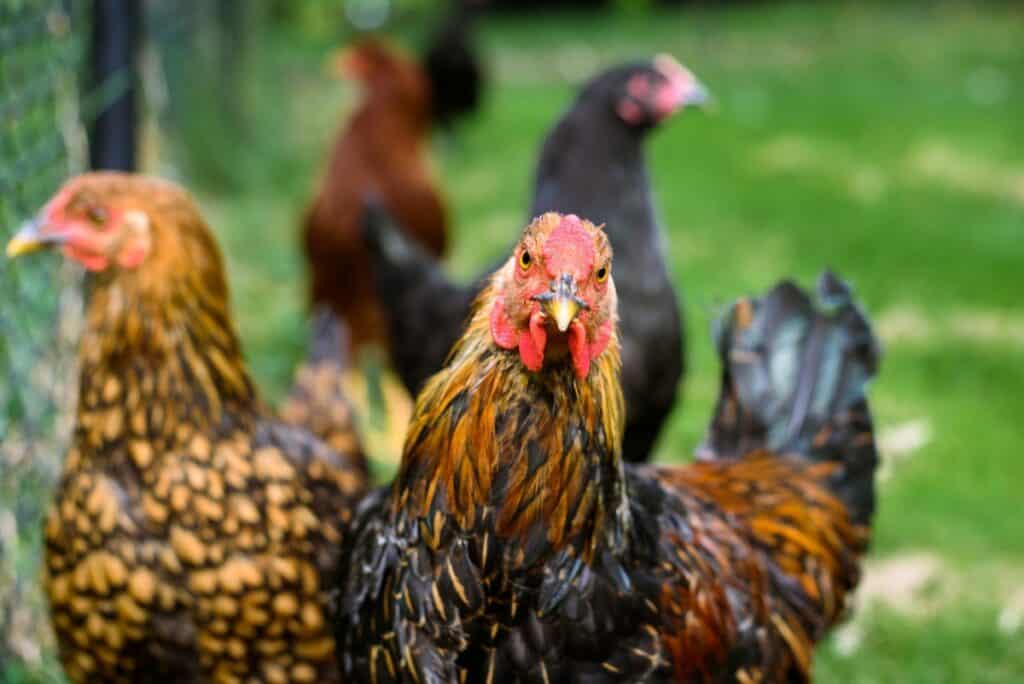
Photo by Jordan Whitt on Unsplash
Wyandottes are well rounded birds with stout legs and a long body under a thick layer of loose feathers. The shape of a dressed Wyandotte is more similar to the commercial chickens you’ll find in the supermarket or grocer than other heritage breeds.
This American breed, named of the Wendat Native American Tribe, are a great dual purpose breed for the homestead. They are generally docile, great mothers and cold hardy thanks to their rose combs.
Wyandottes also have some of the most spectacular coloured plumage out of any chicken breed. Which is of no consequence to their meat but a joy to watch free-ranging the farm.
Wyandotte Overview
| Age of Maturity | 16 – 20 weeks |
| Live Weight | 3.0 – 4.0 kg (7.0 – 9.0 pounds) |
| Dressed Weight | 2.0 – 2.8 kg (5.0 – 6.5 pounds) |
| Skin Colour | Yellow |
| Breed Temperament | Docile |
Now you have read my list of best heritage chicken breeds for meat let me know what your favourite is in the comments.
And take a look at my Best Heritage Chicken Breeds for Eggs.
Feature image by Marius Karotkis on Unsplash
Share
